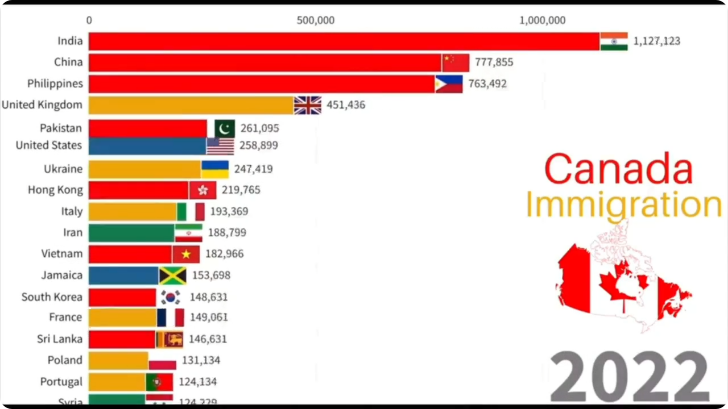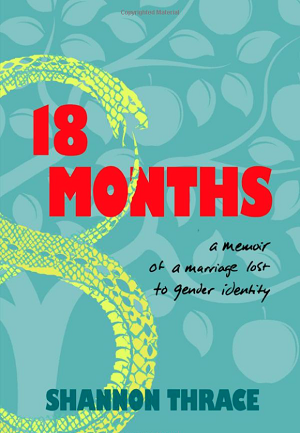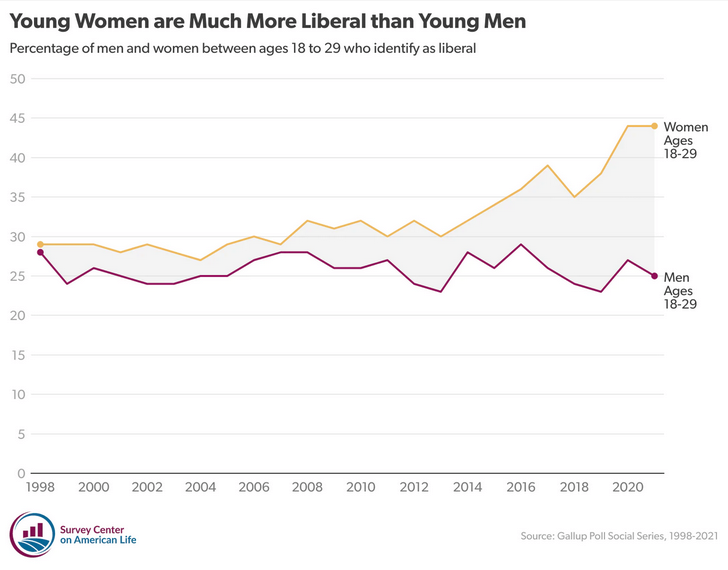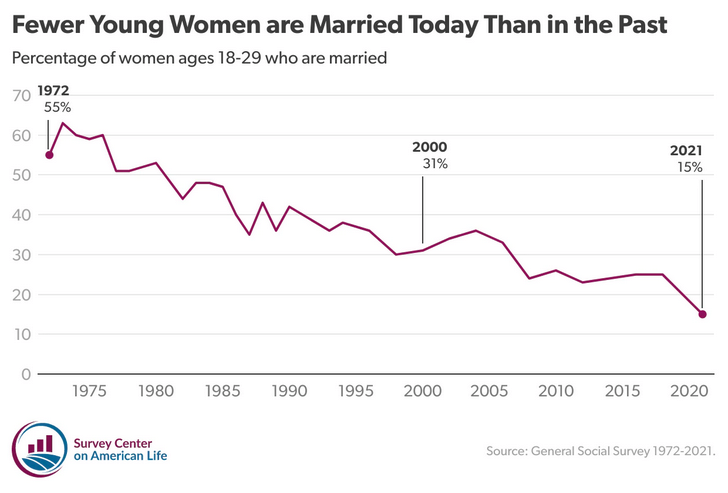As we’ve seen, there had always been non-Romans fighting alongside Roman citizens in the army, for as long as we have reliable records to judge the point. In the Republic (until the 80s BC) these had consisted mostly of the socii, Rome’s Italian allies. These were supplemented by troops from whatever allies Rome might have at the time, but there was a key difference in that the socii were integrated permanently into the Roman army’s structure, with an established place in the “org. chart”, compared to the forces of allies who might fight under their own leaders with an ad hoc relationship to the Roman army they were fighting with. The end of the Social War (91-87BC) brought the Italians into the Roman citizen body and thus their soldiers into the legions themselves; it marked the effective end of the socii system, which hadn’t been expanded outside of Italy in any case.
But almost immediately we see the emergence of a new system for incorporating non-Romans, this time provincial non-Romans, into the Roman army. These troops, called auxilia (literally, “helpers”) first appear in the Civil Wars, particularly with Caesar‘s heavy reliance on Gallic cavalry to support his legions (which at this time seem not to have featured their own integrated cavalry support, as they had earlier in the republic and as they would later in the empire). The system is at this point very ad hoc and the auxiliaries here are a fairly small part of Roman armies. But when Augustus sets out to institutionalize and stabilize the Roman army after the Battle of Actium (31BC) and the end of the civil wars, the auxilia emerge as a permanent, institutional part of the Roman army. Clearly, they were vastly expanded; by 23 AD they made up half of the total strength of the Roman army (Tac. Ann. 4.5) a rough equivalence that seems to persist at least as far as the Constitutio Antoniniana in 212.
Of course it was no particular new thing for the Romans to attempt to use their imperial subjects as part of their army. The Achaemenid army had incorporated a bewildering array of subject peoples with their own distinctive fighting styles, a fact that Achaemenid rulers liked to commemorate […] The Seleucid army at Magnesia (189) which the Romans defeated also had numerous non-Macedonian supporting troops: Cappadocians, Galatians, Carians, Cilicians, Illyrians, Dahae, Mysians, Arabs, Cyrtians and Elamites. At Raphia (217) the Ptolemaic army incorporated Egyptian troops into the phalanx for the first time, but also included Cretans, Greek mercenaries, Thracians, Gauls and Libyans, inter alia. Most empires try to do this.
The difference here is the relative performance that Rome gets out of these subject-troops (both the socii and the auxilia). Take those examples. Quite a number of the ethnicities on Xerxes monument both served in the armies of Darius III fighting against Alexander but then swiftly switched sides to Alexander after he won the battles – the Ionians, Egypt, and Babylon greeted Alexander as a liberator (at least initially) which is part of why the Achaemenid Empire could crumble so fast so long as Alexander kept winning battles. Apart from Tyre and Gaza, the tough sieges and guerilla resistance didn’t start until he reached the Persian homeland. The auxiliaries in the Seleucid army at Magnesia famously fell apart under pressure, whereas the Roman socii stuck in the fight as well as the legions; our sources give us no sense at any point that the socii were ever meaningfully weaker fighters than the legions (if anything, Livy sometimes represents them as more spirited, though he has an agenda here, as discussed). And the Ptolemaic decision to arm their Egyptian troops in the Macedonian manner won the battle (turns out, Egyptians could fight just as well as Greeks and Macedonians with the right organization and training) but their subsequent apparent decision not to pay or respect those troops as well as their Macedonians seems to have led quite directly to the “Great Revolt” which crippled the kingdom (there is some scholarly argument about this last point, but while I think Polybius’ pro-Greek, anti-Egyptian bias creeps in to his analysis, he is fundamentally right to see the connection (Plb. 5.107). Polybius thinks it was foolish to arm non-Greeks, but the solution here to saving the Ptolemaic kingdom would have been arming the Egyptians and then incorporating them into the system of rule rather than attempting to keep up the ethnic hierarchy with a now-armed, angry and underpaid underclass. The Greek-speakers-only-club system of Ptolemaic rule was unsustainable in either case, especially with Rome on the horizon).
By contrast, the auxilia were mostly very reliable. The one major exception comes from 69 AD – the “Year of the Four Emperors” to give some sense of its chaos – when the Batavian chieftain Julius Civilis (himself an auxiliary veteran and a Roman citizen) revolted and brought one ala and eight cohorts drawn from the Batavi (probably around 4,500 men or so) with him, out of an empire-wide total of c. 150,000 auxilia (so maybe something like 3.3% of the total auxilia). Indeed, the legions had worse mutinies – the mutiny on the Rhine (Tac. Ann. 1.16ff in 14AD) had involved six legions (c. 30,000 troops, nearly a quarter of Rome’s 25 legions at the time). This despite the fact that the auxilia were often deployed away from the legions, sometimes in their own forts (you’ll see older works of scholarship suggest that the auxilia were kept logistically dependent on the legions, but more recent archaeology on exactly where they were has tended to push against this view). Indeed, the auxilia were often the only military forces (albeit in small detachments) in the otherwise demilitarized “senatorial” provinces (which comprised most of the wealthy, populous “core” of the empire); they could be trusted with the job, provided they weren’t the only forces in their own home provinces (and after 69, they never were). And the auxilia fought hard and quite well. The Romans occasionally won battles with nothing but the auxilia, was with the Battle of Mons Graupius (83 AD, Tac. Agricola 35ff) where the legions were held in reserve and never committed, the auxilia winning the battle effectively on their own. Viewers of the Column of Trajan’s spiral frieze have long noted that the auxilia on the monument (the troop-types are recognizable by their equipment) do most of the fighting, while the legions mostly perform support and combat engineering tasks. We aren’t well informed about the training the auxilia went through, but what we do know points to long-service professionals who were drilled every bit as hard as the famously well-drilled legions. Consequently, they had exactly the sort of professional cohesion that we’ve already discussed.
Why this difference in effectiveness and reliability? The answer is to be found in the difference in the terms under which they served. Rather than being treated as the disposable native auxiliaries of other empires, the Romans acted like the auxilia mattered … because they did.
First of all, the auxilia were paid. Our evidence here is imperfect and still much argued about, but it seems that auxilia were paid 5/6ths of the wages of the legionary counterparts, with the cavalry auxilia actually paid more than the infantry legionaries. While it might sound frustrating to be systematically paid 1/6th less than your legionary equivalent, the legions were paid fairly well. The auxilia probably made in wages about as much as a normal day-laborer, but the wage was guaranteed (something very much not the case for civilian laborers) and while the cost of their rations was deducted from their pay, that deduction was a fixed amount that seems to have been set substantially below the market value of their rations, building in another subsidy. Most auxiliaries seem to have been volunteers, because the deal in being an auxiliary was good enough to attract volunteers looking to serve a full tour of duty (around 20 years; this was a long-service professional army now so joining it meant making a career out of it).
And most importantly, eventually (perhaps under Tiberius or shortly thereafter) the auxilia began to receive a special grant of citizenship on finishing that tour of duty, one which covered the soldier, and any children he might have had by his subsequent spouse (including children had, it seems, before he left the army; Roman soldiers in this period were legally barred from contracting legal marriages while serving, so the grant is framed so that it retroactively legitimizes any children produced in a quasi-marriage when the tour of service is completed). Consequently, whereas a soldier being dragooned or hired as a mercenary into other multi-ethnic imperial armies might end his service and go back to being an oppressed subject, the Roman auxiliary, by virtue of his service, became Roman and thus essentially joined the ruling class at least in ethnic status. Auxiliaries also clearly got a share of the loot when offensive warfare happened and while there is a lot of debate as to if they also received the praemia (the large retirement bonus legionaries got), epigraphically it is pretty clear that auxiliaries who were careful with their money could establish themselves fairly well after their service. I should also note that what we see of auxiliaries suggests they were generally well armed (with some exceptions, which may have more to do with stereotyped depictions of certain kinds of “barbarians” than anything else): metal helmets, mail shirts (an expensive and high quality armor for the period), oval shields, a spear and the spatha – a Roman version of the classic Gallic one-handed cutting sword – are the standard visual indicator in Roman artwork for generic “auxiliaries”. That is actually a fairly high-end kit; it is no surprise that the auxilia could win battles with it.
The attentive should already be noting many of the components of the old socii system now in a new form: the non-Roman troops serve under similar conditions with the Romans, get similar pay and rations (forts occupied by the auxilia show no deviation from the standard Roman military diet), a share of loot and glory and can finally be rewarded for loyal service by being inducted into the Roman citizen body itself (which could mean their sons might well enroll in the legions, a thing which does seem to have happened, as we do see a fair bit of evidence for “military families” over multiple generations).
(For those looking for more detail on the auxilia, a lot of this is drawn from a book I have already recommended, Ian Haynes, Blood of the Provinces: The Roman auxilia and the Making of Provincial Society from Augustus to the Severans (2013). Also still useful for the history of the development of the auxilia is D.B. Saddington, The Development of the Roman auxiliary Forces from Caesar to Vespasian (1982); this is, alas, not an easy book to find as it is – to my knowledge – long out of print, but your library may be able to track down a copy.)
Bret Devereaux, “Collections: The Queen’s Latin or Who Were the Romans, Part V: Saving and Losing and Empire”, A Collection of Unmitigated Pedantry, 2021-07-30.
December 30, 2024
QotD: The auxilia troops of the Imperial Roman armies
December 14, 2024
Explaining the collapse in North American birth rates
The demographic collapse of both Canadian and American birthrates has many causes, but kulak definitely identifies a major one here:
📜Antidiscrimination law is the reason for the Birthrate Collapse.
In North America, for a guy to marry a girl, it’s basically expected that he must make enough more than her that he can pay for himself and support her while she provides for kids, without a decline in her lifestyle… and his status, quality of wife, and whether the marriage will be rocky or happy is determined by whether or not he can actually materially IMPROVE her lifestyle over unmarried life. Which was very achievable in the 50s and 60s when women were paid poorly and largely couldn’t get high status complex careers, and didn’t want to have to, and couldn’t, compete to male standards…
Whereas after antidiscrimination laws it is MANDATED 30-50% of high paying jobs must go to to women, no matter how many more hours men put in, or how less productive the women are. Ie. It is literally legally impossible for the average man to earn more than the average woman, no matter how hard or effectively he works… and because he WILL work harder to try, and because he competing against other men who are working harder to compete for the few high status jobs men can get, Men across the board are effectively POORER than women, they are doing way more work for equal or less pay and status.
It’s a meme now that girls will goof off at office jobs doing tik toks while the male workers are stressed and annoyed in the corner trying to keep the business afloat for the same pay. As such those girls won’t even date those men… because if you have to be stressed at the job for the same pay, you naturally seem poorer.
This is why western marriage and birthrates are collapsing.
And a follow-up response to another comment:
THis leads to spoiled delusional women convinced men are useless on the one hand, and the few self-aware women having to medicate to overcome their “imposter syndrome” as they subconsciously know they’re dead weight which psychologically breaks them.
June 16, 2024
“What the hell is going on in Canada?”
If you’re not Canadian or have any Canadian friends, you may not understand just how badly broken the country is — and the federal government is still desperately pretending that we’re all onboard with the Net Zero/Carbon Tax/”you’ll own nothing” bullshit and piling on the long-term debt:
One of Canada’s intelligence agencies, a couple of months ago, sent a memo to the Liberal federal government informing them that, in the near-future years to come, they are worried about revolutionary activity. I believe Canada is a good case study because it seems the country has been a sociological testing ground for the powers that be to see what happens. Canada is a surreal twilight zone where it feels like every psyop known to man is hurled its way. Canada unquestionably has the worst demographic and immigration issues, the worst housing issues, the worst social stability, and upwards mobility issues, all adjusted and proportional to its population and size, of course. For our purposes, I believe Canada serves as the worst-case scenario of how bad the dating market can be, and how bad it will continue to get.
Canada has some of the lowest upward social mobility among developed nations, especially for young people, particularly within the OECD and G8. This means that young people in Canada find it relatively difficult to move up the economic ladder compared to their parents.
In 2022, Canada’s population growth was significantly driven by immigration. According to Statistics Canada, approximately 95% of the population growth in that year was attributed to immigration. This includes both permanent and temporary residents, with a notable influx of international students, temporary workers, and permanent residents. Only a meagre 5% of Canada’s population growth, including recent immigrants, was from organic growth and childbirth. Below are the national origins of immigrants over the last twenty-four years. The combined total number of people entering Canada per year, including international students, temporary foreign workers, legal immigrants, and refugee claimants, is approximately 1,133,770 individuals officially. In reality, the government over the last four years has lost count.
As of April 2024, the average home price in Canada is approximately CAD $703,446. This is €477,121.93 and USD $511,466.93. Would you like to see what $703k CAD can get you in France? Hint: a lot more than in Canada.
This has been noticed so much by Canadians that it is now a meme, with Conservative Party and opposition leader Pierre Poilievre pointing it out in the House of Commons. You can compare the price of homes and the cost of living with Canadian wages. You can also compare how far those meagre wages would go in other first-world countries like France, Germany, or Sweden. The answer is much farther. Much, much farther. There is currently no hope, short of radical action by the government unheard of in Canadian history, for this situation to be rectified. The only other option is best left unsaid.
“Educated” Women Lead
In Canada, among ethnic Canadians, a significant portion of the female population is more educated and makes more money than Canadian men. Canadian men make, on average, CAD $48,500, while women make CAD $42,000. However, only 56% of men have post-secondary education, while 68% of women do. Men have completed higher levels of high school, and women have completed higher levels of college or university. This has led to a massive gap in socioeconomic status between men and women. It gets worse when you include non-ethnic Canadians. Completed levels of post-secondary education for men remain at 56%, while women’s rise to 73%.
We know that in our post-industrial world, resources translate to money. Money and completed levels of education translate to status. Women are 50% more likely to divorce men when they make more money. When women are already the initiators of divorce 70% of the time, it starts looking pretty ugly, fast.
December 16, 2023
It was forty years ago today
 Elizabeth and I got married in Toronto on this date in 1983. It was a bit of a race to get to the courthouse on time — my so-called best man decided that he had to go back to Mississauga “for a shower” that morning, and was quite late getting back into Toronto. Trying to get a cab to hurry in downtown Toronto traffic was a waste of effort, so I very nearly missed my own wedding. Elizabeth was not pleased with me holding up the show (even though I could rightfully claim it wasn’t my fault). The rest of the day is rather a blur to me now.
Elizabeth and I got married in Toronto on this date in 1983. It was a bit of a race to get to the courthouse on time — my so-called best man decided that he had to go back to Mississauga “for a shower” that morning, and was quite late getting back into Toronto. Trying to get a cab to hurry in downtown Toronto traffic was a waste of effort, so I very nearly missed my own wedding. Elizabeth was not pleased with me holding up the show (even though I could rightfully claim it wasn’t my fault). The rest of the day is rather a blur to me now.
 We had the reception that evening at a lovely house in the Playter Estates (during which my father tried to pick a fight with Elizabeth’s uncle), and then set off for our very brief honeymoon in Niagara-on-the-Lake the next day. We could only afford two nights at the Prince of Wales hotel, and because we got married on Saturday, we were in NOTL for Sunday and Monday nights. Back in 1983, Ontario still had fairly restrictive Sunday closing laws, so there was very little to do — almost everything was closed. (And that was probably for the best, as we had almost no money to spend anyway…)
We had the reception that evening at a lovely house in the Playter Estates (during which my father tried to pick a fight with Elizabeth’s uncle), and then set off for our very brief honeymoon in Niagara-on-the-Lake the next day. We could only afford two nights at the Prince of Wales hotel, and because we got married on Saturday, we were in NOTL for Sunday and Monday nights. Back in 1983, Ontario still had fairly restrictive Sunday closing laws, so there was very little to do — almost everything was closed. (And that was probably for the best, as we had almost no money to spend anyway…)
 One of the few businesses we found open in the area was the original Chateau des Charmes estate winery (not the huge, imposing facility of today: a small industrial-looking building a few kilometres away), where the only person on duty was Mme Andrée Bosc who gave us an exhaustive tasting experience and showed us around the winery. Neither of us were experienced wine drinkers, so this was wonderful for both of us. I’d love to say that we started our wine cellar that day, but that would only be partially true: we bought about a dozen bottles of various Chateau des Charmes wines, but we couldn’t afford to restock after those had been opened. We visited the winery every year on our anniversary for about a decade, until we got out of the habit of going back to NOTL (which was around the time our son was born).
One of the few businesses we found open in the area was the original Chateau des Charmes estate winery (not the huge, imposing facility of today: a small industrial-looking building a few kilometres away), where the only person on duty was Mme Andrée Bosc who gave us an exhaustive tasting experience and showed us around the winery. Neither of us were experienced wine drinkers, so this was wonderful for both of us. I’d love to say that we started our wine cellar that day, but that would only be partially true: we bought about a dozen bottles of various Chateau des Charmes wines, but we couldn’t afford to restock after those had been opened. We visited the winery every year on our anniversary for about a decade, until we got out of the habit of going back to NOTL (which was around the time our son was born).
After our brief honeymoon, we both had to go back to our jobs. Very shortly after that, my employer (the almost-unknown-to-Google Mr Gameway’s Ark) went bankrupt, which was financially bad timing for us, having just spent most of our tiny cash hoard on our honeymoon.
December 10, 2023
QotD: Roman citizenship
As with other ancient self-governing citizen bodies, the populus Romanus (the Roman people – an idea that was defined by citizenship) restricted political participation to adult citizen males (actual office holding was further restricted to adult citizen males with military experience, Plb. 6.19.1-3). And we should note at the outset that citizenship was stratified both by legal status and also by wealth; the Roman Republic openly and actively counted the votes of the wealthy more heavily than those of the poor, for instance. So let us avoid the misimpression that Rome was an egalitarian society; it was not.
The most common way to become a Roman citizen was by birth, though the Roman law on this question is more complex and centers on the Roman legal concept of conubium – the right to marry and produce legally recognized heirs under Roman law. Conubium wasn’t a right held by an individual, but a status between two individuals (though Roman citizens could always marry other Roman citizens). In the event that a marriage was lawfully contracted, the children followed the legal status of their father; if no lawfully contracted marriage existed, the child followed the status of their mother (with some quirks; Ulpian, Reg. 5.2; Gaius, Inst. 1.56-7 – on the quirks and applicability in the Republic and conubium in general, see S.T. Roselaar, “The Concept of Conubium in the Roman Republic” in New Frontiers: Law and Society in the Roman World, ed. P.J. du Plessis (2013)).
Consequently the children of a Roman citizen male in a legal marriage would be Roman citizens and the children of a Roman citizen female out of wedlock would (in most cases; again, there are some quirks) be Roman citizens. Since the most common way for the parentage of a child to be certain is for the child to be born in a legal marriage and the vast majority of legal marriages are going to involve a citizen male husband, the practical result of that system is something very close to, but not quite exactly the same as, a “one parent” rule (in contrast to Athens’ two-parent rule). Notably, the bastard children of Roman women inherited their mother’s citizenship (though in some cases, it would be necessarily, legally, to conceal the status of the father for this to happen, see Roselaar, op. cit., and also B. Rawson, “Spruii and the Roman View of Illegitimacy” in Antichthon 23 (1989)), where in Athens, such a child would have been born a nothos and thus a metic – resident non-citizen foreigner.
The Romans might extend the right of conubium with Roman citizens to friendly non-citizen populations; Roselaar (op. cit.) argues this wasn’t a blanket right, but rather made on a community-by-community basis, but on a fairly large scale – e.g. extended to all of the Campanians in 188 B.C. Importantly, Roman colonial settlements in Italy seem to pretty much have always had this right, making it possible for those families to marry back into the citizen body, even in cases where setting up their own community had caused them to lose all or part of their Roman citizenship (in exchange for citizenship in the new community).
The other long-standing way to become a Roman citizen was to be enslaved by one and then freed. An enslaved person held by a Roman citizen who was then freed (or manumitted) became a libertus (or liberta), by custom immediately the client of their former owner (this would be made into law during the empire) and by law a Roman citizen, although their status as a freed person barred them from public office. Since they were Roman citizens (albeit with some legal disability), their children – assuming a validly contracted marriage – would be full free-born Roman citizens, with no legal disability. And, since freedmen and freedwomen were citizens, they also could contract valid marriages with other Roman citizens, including freeborn ones […]. While most enslaved people in the Roman world had little to no hope of ever being manumitted (enslaved workers, for instance, on large estates far from their owners), Roman economic and social customs functionally required a significant number of freed persons and so a meaningful number of new Roman citizens were always being minted in the background this way. Rome’s apparent liberality with admission into citizenship seems to have been a real curiosity to the Greek world.
These processes thus churned in the background, minting new Romans on the edges of the populus Romanus who subsequently became full members of the Roman community and thus shared fully in the Roman legal identity.
Bret Devereaux, “Collections: The Queen’s Latin or Who Were the Romans, Part II: Citizens and Allies”, A Collection of Unmitigated Pedantry, 2021-06-25.
October 7, 2023
QotD: Saudi princes
I see that Prince Abdul-Rahman bin Abdulaziz al Saud died the other day. If you’re having trouble keeping track of your Saudi princes, well, I don’t blame you. Unlike the closely held princely titles of the House of Windsor, the House of Saud is somewhat promiscuous with the designation: there are (at the time of writing) over 10,000 Saudi “princes” running around the country — and, in fact, at this time of year, more likely running around Mayfair and the French Riviera, exhausting the poor old blondes from the escort agencies. I believe that’s Abdul-Rahman at right, although to be honest all Saudi princes look alike to me, except that some wear white and others look very fetching in gingham. As I once remarked to Sheikh Ghazi al-Ghosaibi, the late cabinet minister, he was the only Saudi I knew who wasn’t a prince.
Abdul-Rahman was a longtime Deputy Defense Minister, whose catering company, by happy coincidence, held the catering contract for the Defense Ministry. The first Saudi prince to be educated in the west, he was a bit of a cranky curmudgeon in later years, mainly because of changes to the Saudi succession that eliminated any possibility of him taking the throne. But he nevertheless held a privileged place as the son of Ibn Saud, the man who founded the “nation” and stapled his name to it. When I say “the son”, I mean a son: Ibn Saud had approximately 100 kids, the first born in 1900, the last over half-a-century later, in 1952, a few months before ol’ Poppa Saud traded in siring for expiring.
Abdul-Rahman’s mother was said to be Ibn Saud’s favorite among his 22 wives — or, at any rate, one of the favorites. Top Five certainly. She also had the highest status, because she bore him more boys — seven — than any other other missus. They’re known as the Sudairi Seven or, alternatively, the Magnificent Seven. She also gave him seven daughters. They’re known as the seven blackout curtains standing over in the corner. This splendidly fertile lady’s name was Hussa bint Ahmed, and she was Ibn Saud’s cousin once removed and then, if I’m counting correctly, his eighth wife. But she’s a bit like the Grover Cleveland of the House of Saud — in that he’s counted as the 22nd and 24th President of the United States, and she’s the eighth wife and also either the tenth or eleventh. He first married her when he was 38 and she was 13. But he divorced her and then remarried her. In between their marriages she was married to his brother, but Ibn Saud was a sentimental lad and never got over his child-bride-turned-sister-in-law, so he ordered his brother to divorce her.
Don’t worry, though: In the House of Saud, it’s happy endings all round. Two of their daughters wound up marrying two of the sons of another brother of Ibn Saud. The Saudi version of Genealogy.com must be a hoot: “Hey, thanks for the DNA sample. You’re 53.8 per cent first cousin, and 46.2 per cent uncle.”
Mark Steyn, “The Son of the Man who Put the Saud in Saudi Arabia: Prince Abdul-Rahman bin Abdulaziz al Saud, 1931-2017”, Steyn Online, 2017-07-18.
July 31, 2023
QotD: Stranger in a Strange Land at 50
Heinlein’s very popular novel had a significant short-term effect on the culture when it came out but a negligible long-term effect, beyond adding “grok” to the language. Its most radical message was the idea of group marriage of a particular sort. The nests it described were stable high trust families formed with minimal search and courtship. You looked into someone’s eyes, recognized him or her as a water brother, and knew you could trust each other forever after. It was a naively romantic picture, possibly workable with the assistance of the protagonist’s superpowers, risky in the real world but fitting well into the naively romantic hippy culture of the time. Quite a lot of people tried to implement it; for some it may have worked. When I spoke on a panel at a science fiction convention some years ago, one audience member made it reasonably clear that she had joined a nest, was still in it, and was happy with the result.
Sexual mores changed but not, for most, in that direction. Living in southern California in the eighties, the view that seemed most common among young adults — many of those I associated with would have been people I met through the SCA,1 a subculture that had noticeable overlap with both science fiction fandom and hippiedom — was very different. The ideal pattern was stable monogamy but who could be so lucky? Insofar as it had been replaced it was mostly by the increasing acceptability and practice of casual sex.
There has been some development since Stranger was published, in practice and theory, along the lines of group marriage of a somewhat different sort. Polyamory is more self-conscious and, at least in theory, more structured than what we see in Stranger. Partners are classified as primary or secondary and a good deal of attention paid to what those terms mean and what behavior they imply. The result is in theory closer to the Oneida Commune of the 19th century, on a much smaller scale, than to the nest described in Stranger.2
This fits not only what happened in the real world but what happened in Heinlein’s fictional worlds. Consider a more sophisticated version of group marriage, the line marriage in The Moon is a Harsh Mistress. It is highly organized, with new members brought in at the low age end on a regular pattern of alternating gender. There is extensive search/courtship. And the protagonist offers a plausible explanation of its social role, why the institutions developed and what purposes it served.
Finally, consider Friday, a later novel. The protagonist, surprisingly naive given her profession — secret agent — joins a group marriage, makes a substantial commitment to it and is booted out, her share of the assets stolen, when it is discovered that she is an artificial person, the superior product of genetic engineering. Her much later commitment to a second group marriage follows more careful research.
David D. Friedman, “Odds and Ends”, David Friedman’s Substack, 2023-04-29.
1. The Society for Creative Anachronism, a historical recreation organization I have been active in for a very long time.
2. The practice sometimes ends up as open marriage, monogamous for purposes of producing and rearing children but with no obligation to sexual exclusivity — an option made possible by reliable contraception.
May 31, 2023
The War Against The Patriarchy, updated
Janice Fiamengo responds to a recent Joel Kotkin op-ed in the National Post discussing the “war of the sexes” and the long, long string of victories chalked up by the “weaker sex”:
The war between the sexes has ended, and rather than a co-operative future that could benefit all, it has turned out to be more like a lopsided win for the female side.
So begins Joel Kotkin’s National Post op/ed “Women have won the ‘war between the sexes’, but at what cost?” It is a welcome but disappointing analysis that starts with a show of defiance and ends in quiet desperation. Of course, it’s good to find anyone in a major newspaper willing to cast a less-than-adulatory eye on “The Future [that] is Female” or to write sympathetically about men, and Kotkin, a prolific author on cities and technocracy, proves his good faith on the strength of that opening statement alone. Aside from the wishful thinking of believing feminism to be winding down (was #MeToo a prelude to ceasefire?) or ever having envisioned a co-operative future (he should take a look at Kate Millett’s incendiary “Theory of Sexual Politics“), Kotkin is to be commended for daring to name as a war the decades of post-1960s activism, in which all the decisive victories have been claimed by feminists against men.
Kotkin, however, isn’t able to continue in the take-no-prisoners style he chose for his opening salvo. He is prevented, either by his own prudence, his lack of deep knowledge, or the paper’s editorial insistence, from targeting feminist ideology and policies in the rest of the article. In fact, the article doesn’t name a single piece of debilitating feminist legislation or even make one reference to the many expressions of anti-male contempt that are now deeply embedded in our public culture. The result is a curiously disembodied discussion in which serious social problems linked to male decline are pointed to without any attempt made to say exactly how they came about or how they might be reversed.
“The crux of the problem,” Kotkin tells us to start off, “lies in the fact that as women rise, men seem to be falling.” Here we see him start to draw back from the attack, as if afraid to say what he really thinks. His phrasing makes male decline sound like a natural phenomenon, an illustration of the primordial principle of Yin and Yang. Or perhaps it is simply that men, with their allegedly fragile egos and hegemonic masculinity, haven’t been able to compete against all that female ability, once dammed up by the patriarchy, now finally being let loose on the world (though always with calls for more to be done to assist women).
[…]
Kotkin refers to men “left behind” in the economy, but he keeps mum about the decades of affirmative action in higher education and hiring (detailed by Paul Nathanson and Katherine Young in Legalizing Misandry, pp. 81-124) as well as draconian sexual harassment legislation that have made work life unrewarding and often punitive for men.
He stresses the loss of sexual amity and of willingness to marry, but avoids discussing the nightmare of family law that has made marriage or even cohabitation perilous for many men.
The sins of omission do not end there. Perhaps working on the assumption — not without basis — that any discussion of social problems will need to focus on women at least as much as on men, Kotkin proceeds to backtrack on his earlier claim about women’s victory in the sex war, outlining instead a downbeat portrait of women’s troubles. Citing research by Jonathan Haidt, he tells us that adolescent girls have been severely affected by depression and self-harm, that many young women, without reliable men to support them, have had to fend for themselves in a difficult economic climate, and that single mothers, left with few options, are unable to offer stability to their children. It looks as if the decline of men mentioned early in the article has mainly hurt women and their children.
What Kotkin neglects to mention — surely deliberately — is that adolescent boys commit suicide at 4 X the rate of girls, resolving their depression decisively enough that Haidt seems not to have felt the need to account for them; that women are the ones who choose divorce in approximately 70% of cases; and that divorced fathers are too often denied a real role in their children’s lives while being burdened past endurance by exorbitant support payments. In other words, for every sad woman held up for our concern, there is a plurality of equally sad men rendered invisible in the conventional reporting. The staggering statistics on male suicide provide a stark illustration of Kotkin’s initial contention about the casualties of the sex war — yet he leaves these aside, choosing instead to voice the now-obligatory concern about the trans threat to women’s sports.
Perhaps most importantly, Kotkin suggests through his word choice that the data he cites are simply “trends”, occurrences that came about through economic and demographic factors independent of the sex war initially evoked. But they aren’t. They flow directly from a feminist vision in which the family — explicitly understood by feminist leaders to be a source of abuse and oppression — must be transformed and women liberated from reliance on the fathers of their children. Under this vision, a more just and equitable world will be ushered in by women’s superior leadership once they are freed from their unpaid labor in the home and the many sexist barriers that hold them back. That freedom must be aided, according to conventional wisdom, through abundant contraception, unfettered abortion, collectivized child care, no-fault divorce, programs and propaganda to urge men to do more housework, and non-stop encouragement to women — in movies, sit-coms, advertising, articles, and government equity programs — to give up on their men.
April 20, 2023
When You Get Distracted Easily
It’s a Southern Thing
Published 19 Jan 2021Just keep nodding and try to hang in there.
(more…)
March 8, 2023
“By fostering intense family loyalties and strong nepotistic urges”, cousin marriage “makes the development of civil society more difficult”
Ed West on what he calls the worst western foreign policy disaster since 1204, the Iraq quagmire:

Mohammed Saeed al-Sahhaf, better known in the West as “Baghdad Bob” or “Comical Ali”, Iraqi Minister of Information for President Saddam Hussein.
This month marks the 20th anniversary of the greatest western foreign policy disaster since the Fourth Crusade. It was the pre-eminent modern-day example of folly, driven by wishful thinking, utopianism and a lack of interest in history and how human societies differ. This was mostly carried out by good people, including our own Tony Blair, and promoted by thoughtful and humanitarian commentators who thought they were making the world a better place.
The White House regime which brought chaos and misery to Iraq were most of all entranced by The Weekly Standard, the now-defunct magazine most associated with neoconservative foreign policy. Had any of them read The American Conservative instead, they might have avoided the whole tragedy. In particular they ought have read Steve Sailer’s “The Cousin Marriage Conundrum“, printed in the run-up to the invasion and in which the author made a seemingly curious argument for why nation-building in Iraq would fail — its high rates of cousin marriage.
Pointing out that between 46 and 53 percent of Iraqis who married did so to first or second cousins, Sailer wrote that: “By fostering intense family loyalties and strong nepotistic urges”, cousin marriage “makes the development of civil society more difficult”. The neocon dream of jumpstarting democracy was therefore clearly doomed to failure.
Even those with a cursory knowledge of the country knew that Iraq was split between Sunni and Shia Arabs, as well as Kurds in the north, each group’s area of dominance roughly corresponding to three former Ottoman provinces. However, these were further subdivided into “smaller tribes, clans, and inbred extended families — each with their own alliances, rivals, and feuds”, in total about 150 tribes comprising some 2,000 clans.
Saddam’s politics were mired in blood, in both senses. He came from the al-Bu Nasir, a tribe comprising some 25,000 people based in the town of Tikrit, and his regime was filled with his relatives. His political career had begun in 1957 when the 20-year-old had joined the revolutionary Ba’ath (“Resurrection”) Party, following his uncle Kharaillah Tulfha, who had fought against the British in the Second World War. Tulfha would become his father-in-law, for Saddam also married his first cousin, although he later took a second wife. Family life wasn’t entirely harmonious, and the man who introduced that couple, Saddam’s food taster, was later stabbed to death by the dictator’s psychotic eldest son Uday at a party thrown by Egyptian president Hosni Mubarak.
The unfortunate food taster was an Assyrian Christian, and within Saddam’s regime religious minorities could rise high, as is often the case in empires, because they presented no threat. His foreign minister, Tariq Aziz, was also a Christian, his birth name being Mikhail Yuhanna.
The family was everything in Saddam’s Iraq. Mark Weiner wrote in The Rule of the Clan of countries governed by “clannism” that: “These societies possess the outward trappings of a modern state but are founded on informal patronage networks, especially those of kinship, and traditional ideals of patriarchal family authority. In nations pervaded by clannism, government is co-opted for purely factional purposes.” The inevitable result of clannism is kin-based corruption whereby resources, positions and other rewards are monopolised by family groups. In these societies, Weiner wrote, “the nuclear family, with its revolutionary, individuating power, has yet to replace the extended lineage group as the principle framework for kinship or household organisation”.
The Weekly Standard was called the in-flight magazine of Air Force One, but presumably there weren’t that many White House staffers reading the American Conservative at the time, a publication started by Pat Buchanan, the great Republican critic of neocon foreign policy. So the Coalition blundered into a disastrous invasion that cost hundreds of thousands of lives, wrecking Iraq and leaving many areas newly-divided along sectarian lines, while minorities like the Christians and Mandaeans were driven almost to extinction.
January 22, 2023
The Scientific Reason Your Wife Is Always Right. Don McMillan
A Little More Dry Bar
Published 23 May 2022The scientific reason your wife is always right as presented by Don McMillan in this clip from his first ever Dry Bar Comedy special. Whether you’re someone who appreciated power points and graphs, or you just enjoy a good laugh, this clip form Don McMillan’s Dry Bar Comedy special is sure to have you laughing from start to finish.
(more…)
December 10, 2022
Ed West finds nice-ish things to say about the French
It’s actually part two, which I’m sure would astonish many a Brit:

The Royal Standard of the King of France (and by default, the national flag), used between 1638 and 1790.
Wikimedia Commons.
“When, after their victory at Salamis, the generals of the various Greek states voted the prizes for distinguished individual merit, each assigned the first place of excellence to himself, but they all concurred in giving their second votes to Themistocles,” wrote the great 19th-century historian Edward Creasy. “This was looked on as a decisive proof that Themistocles ought to be ranked first of all. If we were to endeavour, by a similar test, to ascertain which European nation has contributed the most to the progress of European civilization, we should find Italy, Germany, England, and Spain, each claiming the first degree, but each also naming France as clearly next in merit. It is impossible to deny her paramount importance in history.”
France is central to the story of Europe, and indeed of Britain. It is almost impossible to understand England’s history without appreciating the relationship with its closest continental neighbour. It is a love-hate affair originating in a grand inferiority complex, a long rivalry that continues tomorrow [Saturday] when England meet France in the World Cup quarter-finals.
In a piece last year I cited some of the most endearing/maddening things about the French, all of which contributed to a sense of amused frustration on our part:
Only in France would football fans protest that a local restaurant had lost a Michelin Star, as happened in Lyon two years ago. Only in France would an expedition to the Himalayas — of huge national importance — fail because it was weighed down by eight tonnes of supplies, including 36 bottles of champagne and “countless” tins of foie gras. And only in France would you get actual wine terrorists, the Comité Régional d’Action Viticole, who have bombed shops, wineries and other things responsible for importing foreign produce. This is a country which only reluctantly in the 1950s stopped giving school children a nutritious drink for their health, by which the French meant not milk but cider.
This is a country where mistresses are so much part of life that they can legally inherit, and where murder doesn’t really count if it’s done for love. One of France’s most famous socialites, Henriette Caillaux, shot dead the editor of Le Figaro just before the First World War and received just four months in jail because it was a crime passionnel. So that’s all right then.
But there are so many other things to love about our strange neighbours …
The Anglo-French relationship is a difficult one, reflected in the troubled history of royal marriages. Charles I’s Catholic wife Henrietta Maria was a drag on his popularity among excitable Protestant radicals, and turned out to be the last French consort; in the 14th century Edward II’s wife Isabella overthrew him and, perhaps, conspired to have him killed, after a rocky marriage that began badly when he brought his lover to the coronation and acted inappropriately affectionate towards him. But then, as Edith Cresson pointed out, this is to be expected when you marry an Englishman.
In 1514 Louis XII married an English bride, Henry VIII’s sister Mary; she was 18, he was 53, and had syphilis, so she must have been delighted about the whole thing; however, within weeks she had “danced him to death”, the sex apparently proving too exciting for his nervous system. Francesco Vettori, Florence’s ambassador to Rome, wrote that King Louis had a lady “so young, so beautiful and so swift that she had ridden him right out of the world”.
***
Perhaps not a terrible way for a Frenchman to go, and not the last French head of state to die in a similar manner. President Félix Faure expired in 1899 while with his mistress, after which his funeral featured this very understated carriage.
***
Numerous French presidents have had affairs, although Francois Mitterrand actually had a secret second family while in the Élysée Palace. Mitterrand’s last meal was also ultra-French: “He’d eaten oysters and foie gras and capon — all in copious quantities — the succulent, tender, sweet tastes flooding his parched mouth. And then there was the meal’s ultimate course: a small, yellow-throated songbird that was illegal to eat. Rare and seductive, the bird — ortolan — supposedly represented the French soul. And this old man, this ravenous president, had taken it whole — wings, feet, liver, heart. Swallowed it, bones and all. Consumed it beneath a white cloth so that God Himself couldn’t witness the barbaric act.”
***
The French are world outliers in their attitudes to adultery, the only country where a majority of people think it’s fine. Germany is number two in this index of permissiveness while the Americans, of course, are the most disapproving western nation.
October 19, 2022
June 29, 2022
It’s not your imagination: young women are becoming more liberal
Daniel Cox looks at the noted shift in political opinions among young women (aged 18-29) compared to their male counterparts, and not just on the current hot-button topic of abortion rights:
… In fact, young women have become significantly more liberal over the past decade whereas the political identity of young men has remained largely unchanged over time.
Rise of Unmarried Women
There are a few reasons for the increasingly liberal politics of young women. One explanation may lie in their marital status. Compared to previous generations of young women, far more women under the age of 30 today are unmarried. Only 15 percent of young women today are married compared to more than one-third of young women two decades ago.
Why does this matter? Research has shown that unmarried women feel more connected than their married counterparts to other women — a phenomenon known as “linked fate” — and it can lead them to support more liberal policies. In their fascinating 2017 study, Christopher T. Stout, Kelsy Kretschmer, and Leah Ruppanner argue that “women consistently earn less money and hold less power, which fosters women’s economic dependency on men. Thus, it is within married women’s interests to support policies and politicians who protect their husbands and improve their status.” This phenomenon of “linked fate” was not found to be evident among men, so even though young men are also less likely to be married compared to older generations, their marital status may have less of an impact on their politics than for women.
The Growing Education Divide
Over the past several decades, women’s educational attainment has far outpaced that of men’s; “Women in the United States have earned more bachelor’s degrees than men every year since the mid-1980s”, writes Derek Thompson in the Atlantic.
American colleges and universities now enroll roughly six women for every four men. This is the largest female-male gender gap in the history of higher education, and it’s getting wider.
The education divide between men and women has become more politically relevant because of the stronger connection between educational attainment and political behavior. In recent elections, college graduates have become a much more loyal Democratic constituency. And on a range of issues, college-educated Americans are more liberal than those without a Bachelor’s degree.
February 18, 2022
QotD: Historical legal context of marriage
The law of servitude in marriage is a monstrous contradiction to all the principles of the modern world, and to all the experience through which those principles have been slowly and painfully worked out. It is the sole case, now that negro slavery has been abolished, in which a human being in the plenitude of every faculty is delivered up to the tender mercies of another human being, in the hope forsooth that this other will use the power solely for the good of the person subjected to it. Marriage is the only actual bondage known to our law. There remain no legal slaves, except the mistress of every house.
John Stuart Mill, The Subjection of Women, 1869.











